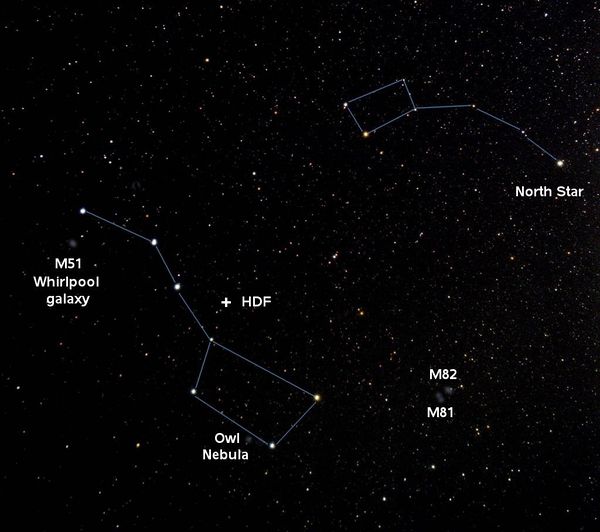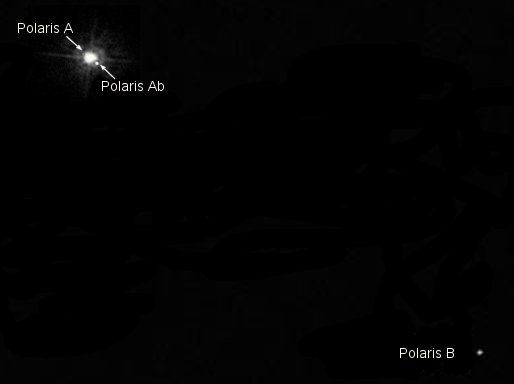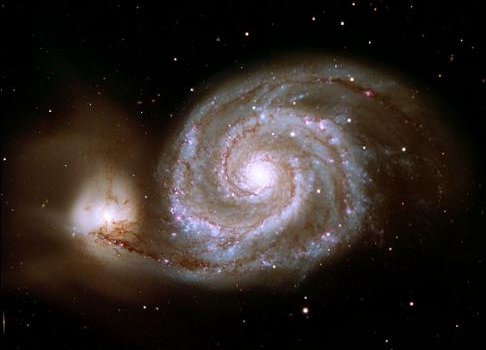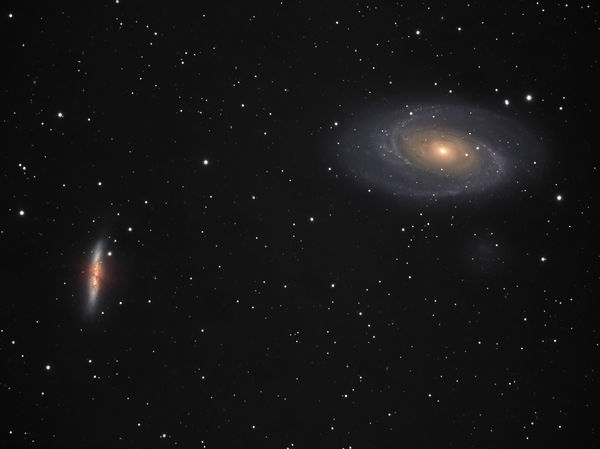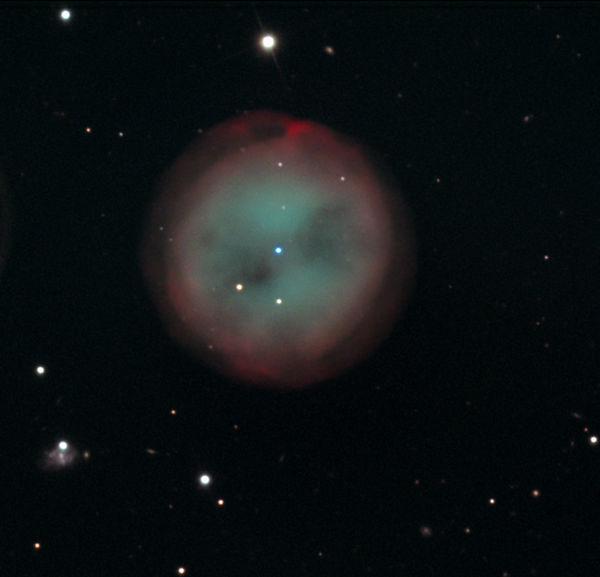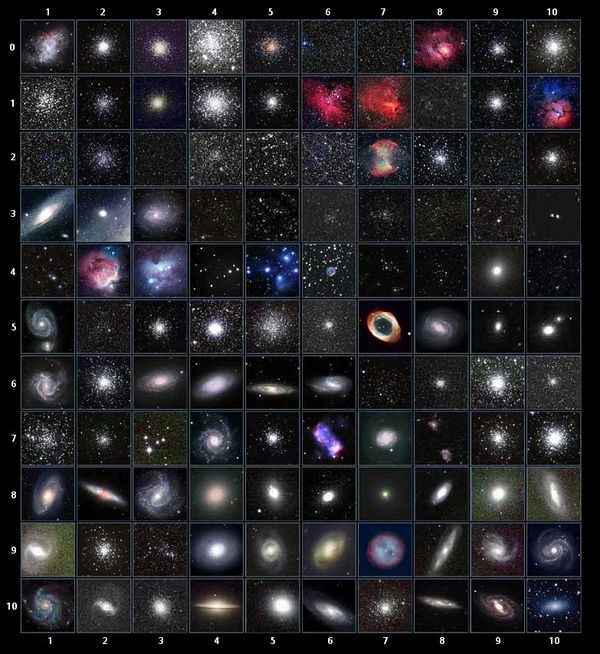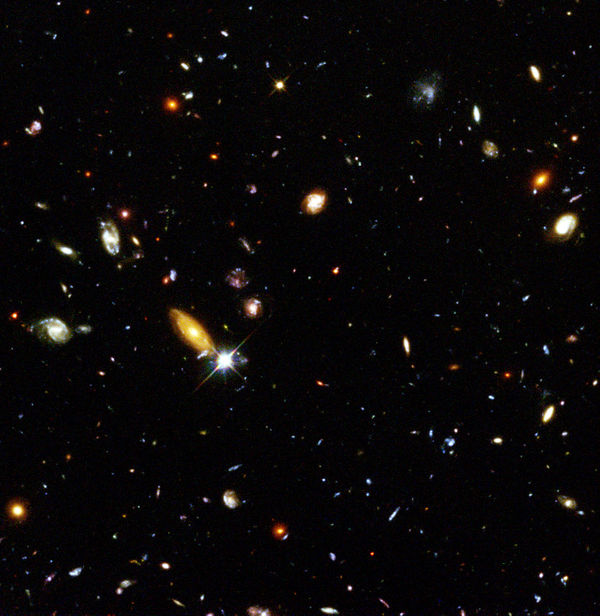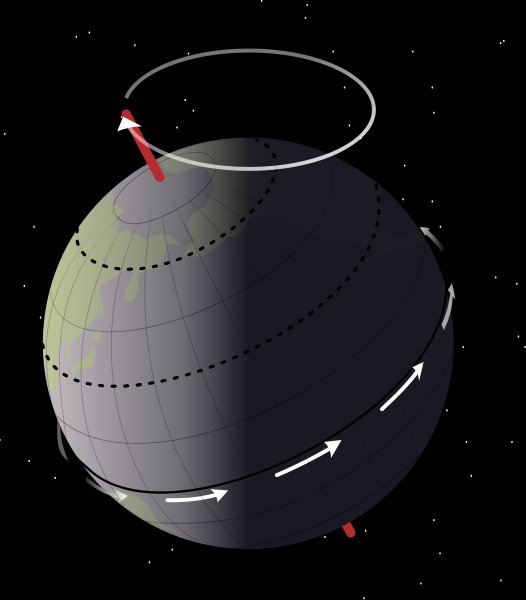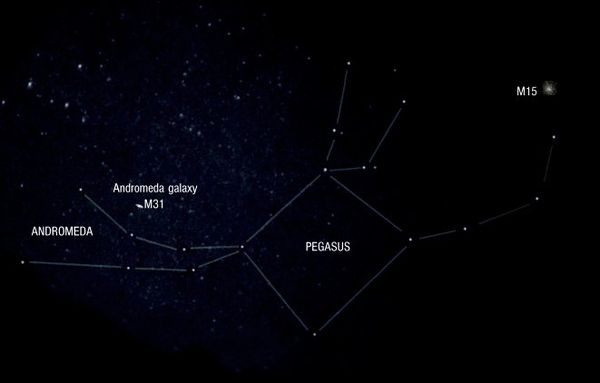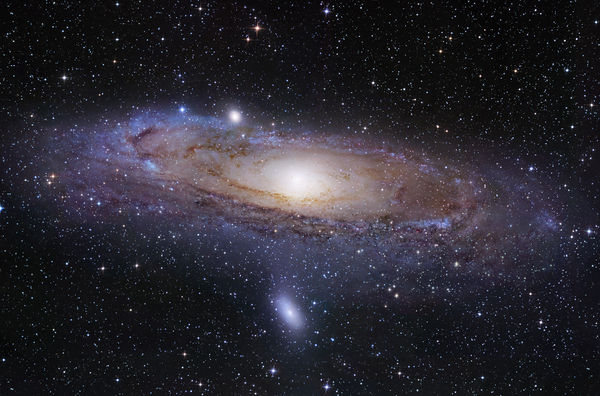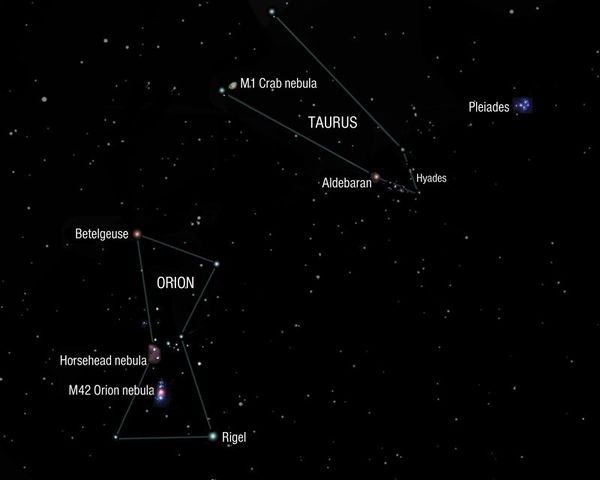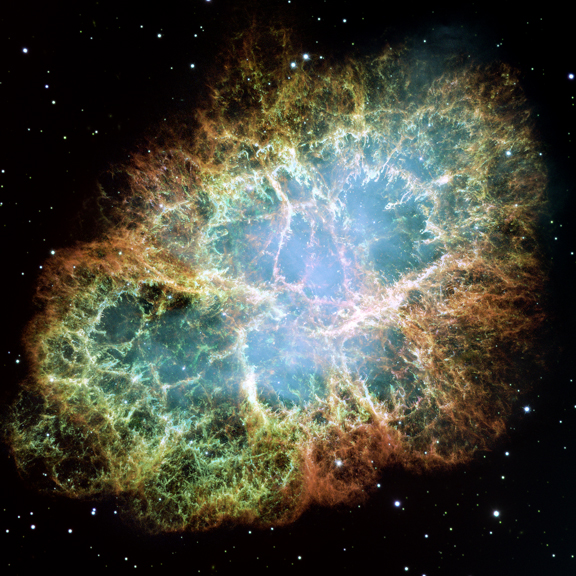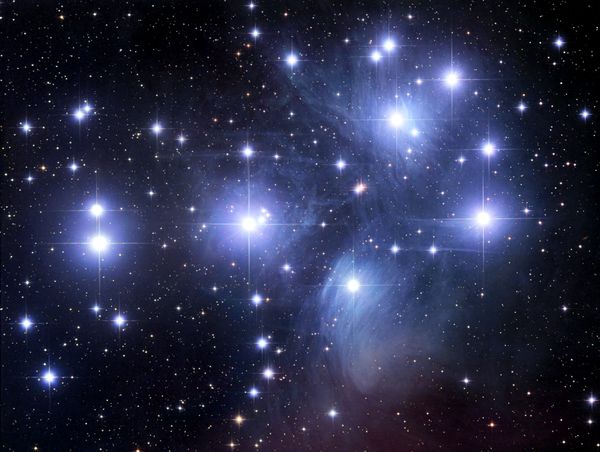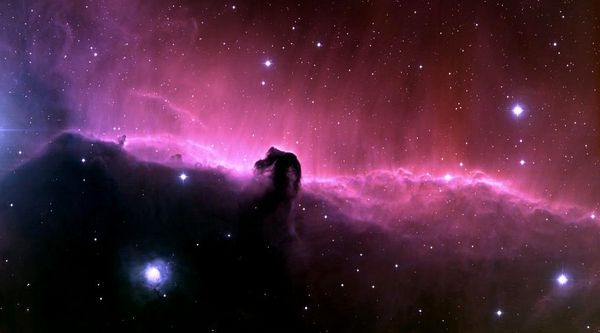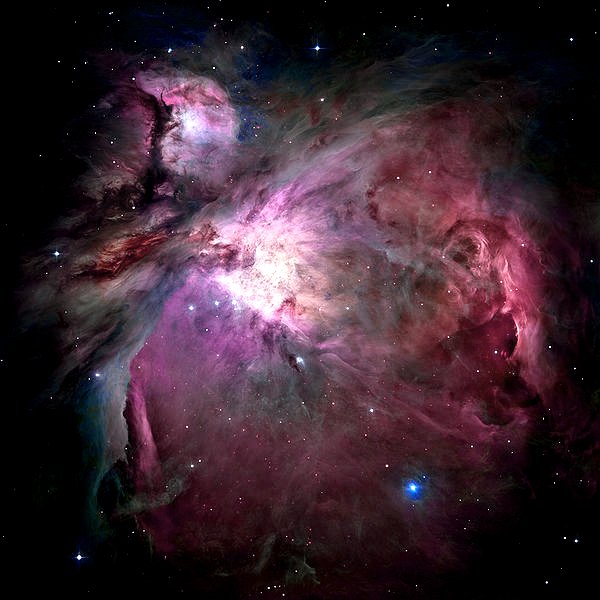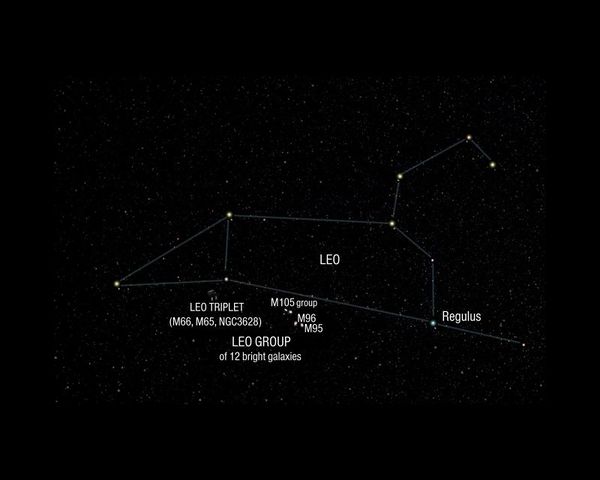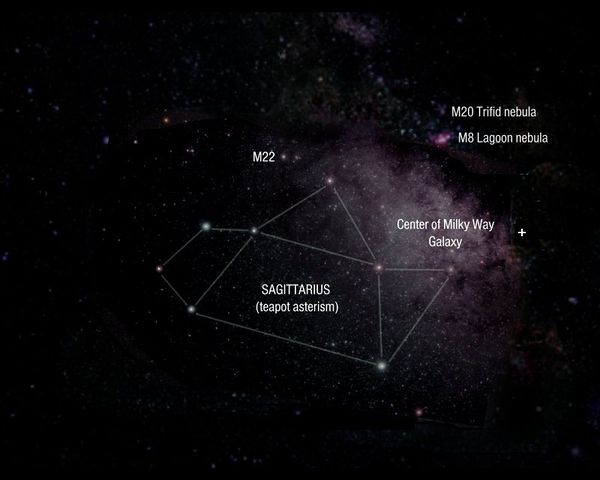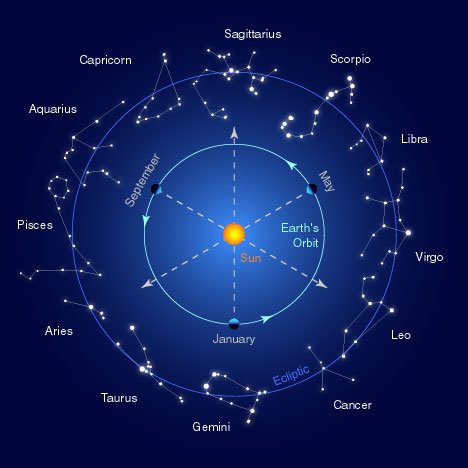Constellations: Difference between revisions
No edit summary |
No edit summary |
||
| Line 72: | Line 72: | ||
Messier's galaxies were no more than 63 million | Messier's galaxies were no more than 63 million light years (LY) away, and may be seen with a good backyard telescope. It wasn't until the Hubble Space Telescope that we could see galaxies 14 billion ly distant. The Hubble Deep Field (HDF) images were taken in the Big Dipper. These galaxies are what was seen in a tiny speck of sky no larger than a grain of sand held at arms length. | ||
| Line 106: | Line 106: | ||
As Earth revolves around the Sun during the year our night looks out towards different parts of the universe. With each season different constellations appear to cross the sky. | As Earth revolves around the Sun during the year our night looks out towards different parts of the universe. With each season different constellations appear to cross the sky. | ||
Autumn | <center>'''Autumn'''</center> | ||
Pegasus (the flying horse) and Andromeda (which looks like his hind legs) leaps over a small glow, the Andromeda galaxy (M31), 2.5 million light years away. Andromeda is in the Local Group of Galaxies. It looks much like our Milky Way galaxy and they are nearly the same size. Edwin Hubble found a Cepheid Variable star in the Andromeda galaxy that revealed how distant the galaxy is. | |||
| Line 122: | Line 124: | ||
<center>''Winter | <center>'''Winter</center> | ||
We see Orion the hunter chase Taurus the bull, across the sky. The star Betelgeuse on Orion's left shoulder is a red giant, a dying star that has expanded before its final collapse. | |||
| Line 148: | Line 152: | ||
<center>''Spring | <center>'''Spring</center> | ||
We see Leo the Lion, near Ursa Major, the Great Bear, where there are more galaxies up above and far beyond the plane of our Milky Way. | |||
| Line 155: | Line 161: | ||
<center>''Summer | <center>'''Summer'''</center> | ||
The Teapot Sagittarius crosses the sky. The center of our Milky Way galaxy looks like steam rising over the teapot's spout. Here we see many nebulae and globular clusters of stars towards the center of our galaxy. | |||
| Line 178: | Line 185: | ||
You know about: ZODIAC CONSTELLATIONS | <center>'''You know about: ZODIAC CONSTELLATIONS'''</center> | ||
As we look towards the Zodiac Constellations, we are looking across the plane of the solar system where we naturally find the Sun, Moon, and planets. This path in the sky is called the ecliptic. | As we look towards the Zodiac Constellations, we are looking across the plane of the solar system where we naturally find the Sun, Moon, and planets. This path in the sky is called the ecliptic. | ||
Revision as of 23:23, 7 January 2012
You know the Big Dipper, part of the Big Bear (Ursa Major) and the Little Dipper or Little Bear (Ursa Minor) .
In them we find not only the North Star, but also lovely galaxies, a planetary nebula, and the spot where the Hubble Space Telescope took its Hubble Deep Field (HDF) images of galaxies billions of light years away.
The side of the bowl of the Big Dipper points towards the faint North Star (Polaris) at the tip of the Little Bear's tail, over the North Pole. As everyone knows, when we face Polaris we face North. East is to our right, West to our left, and South behind.
A sextant, that measures how high Polaris is above the horizon, tells latitude, how far someone is north of the equator. If Polaris appears on the horizon (zero degrees up), we are at the Equator. If it is directly overhead (90 degrees up), we are at the North Pole. If it appears to be 38.5 degrees above the horizon, we might be in Louisville Kentucky, or Uzbekistan, or anywhere on the globe that is 38.5 degrees north of the Equator.
Polaris, once thought to be a binary star, now appears to be three stars orbiting one another. The largest of them is a Cepheid variable star, which brightens and dims predictably. The brightness of Cepheids is so reliable it reveals the distance to galaxies in which they occur.
When we look towards the Big Bear (Ursa Major) and Little Bear (Ursa Minor) we are looking out above the plane of our Milky Way galaxy, through space, to other galaxies such as the Whirlpool (M51), and M81 and 82.
But the little Owl Nebula is in our own galaxy. Here is where a little star, once the size of our Sun, died puffing out a planetary nebula, leaving a small white dwarf at its center.
The M in M51, M81, M82, and M97 comes from Charles Messier (1730-1817) a clerk of the French navy, who made a list of 110 annoying objects not to be confused with comets. The objects in Messier's Catalog turned out to be more interesting than the comets.
Some familiar Messier objects are the star forming Orion Nebula (M42), the Pleiades (M45) open star cluster and the globular star cluster M15, the planetary nebulae from dying stars Ring Nebula (M57) and Owl Nebula (M97), and a supernova remnant Crab Nebula (M1). All are in our 100,000 light year (ly) wide Milky Way galaxy. See if you can find them on the chart ! The Pleiades (M 45), also called Subaru or the Seven Sisters, may easily be seen with the naked eye.
Other Messier objects are galaxies far beyond our own Milky Way galaxy.The most famous is the Andromeda galaxy. On a dark night, away from city lights, the Andromeda galaxy may also be seen with the naked eye.
Messier's galaxies were no more than 63 million light years (LY) away, and may be seen with a good backyard telescope. It wasn't until the Hubble Space Telescope that we could see galaxies 14 billion ly distant. The Hubble Deep Field (HDF) images were taken in the Big Dipper. These galaxies are what was seen in a tiny speck of sky no larger than a grain of sand held at arms length.
Some galaxies are as much as 14 billion light years away. The light we see today, left those galaxies billions years ago. We are seeing what the Universe was like 14 billion years back in time.
Click here for an interesting tour of what can be seen in Ursa Major with a small backyard telescope.
Although Polaris has guided navigators for thousands of years, it hasn't always been over the north pole. Precession, a slow rotation of the direction of the Earth's axis, causes the north pole to trace out a circle every 25,765 years. This is also called precession of the equinoxes. Since it changes the direction of the Earth's tilt, and the Earth's tilt is what causes the seasons, the seasonal constellations change a tiny bit year by year until they return to their original locations after 25,765 years.
As Earth revolves around the Sun during the year our night looks out towards different parts of the universe. With each season different constellations appear to cross the sky.
Pegasus (the flying horse) and Andromeda (which looks like his hind legs) leaps over a small glow, the Andromeda galaxy (M31), 2.5 million light years away. Andromeda is in the Local Group of Galaxies. It looks much like our Milky Way galaxy and they are nearly the same size. Edwin Hubble found a Cepheid Variable star in the Andromeda galaxy that revealed how distant the galaxy is.
We see Orion the hunter chase Taurus the bull, across the sky. The star Betelgeuse on Orion's left shoulder is a red giant, a dying star that has expanded before its final collapse.
We also see the familiar supernova remnant Crab nebula (M1) from a giant star that exploded in 1054 CE, the Pleiades (M45) star cluster, the dim but well loved Horsehead nebula, and a star-birth nebula, the Orion Nebula (M42).
We see Leo the Lion, near Ursa Major, the Great Bear, where there are more galaxies up above and far beyond the plane of our Milky Way.
The Teapot Sagittarius crosses the sky. The center of our Milky Way galaxy looks like steam rising over the teapot's spout. Here we see many nebulae and globular clusters of stars towards the center of our galaxy.
Use star maps, a planisphere if you have one, or free planetarium software such as Stellarium to follow the changes in the sky with seasons.
- On February 1st at 9 PM you will find Orion and Taurus rising in the east. By 12 AM you will see Orion highest in the sky. At 6AM Orion will be setting in the west at the end of the night.
- On May 1st at 9 PM see if you can find Leo rising in the east. Watch Leo cross the sky during the night.
- On August 1st at 9 PM find the Teapot in Sagittarius rising in the southeast. Watch it climb in the southern sky and set at dawn.
- On November 1st at 9 PM find Pegasus and Andromeda, and let them fly across the autumn sky.
As we look towards the Zodiac Constellations, we are looking across the plane of the solar system where we naturally find the Sun, Moon, and planets. This path in the sky is called the ecliptic.
Someone's Zodiac sign is supposed to be the constellation in which the Sun shone the day of his or her birth. However, since the Zodiac was invented by ancient Babylonians in southern Iraq thousands of years ago, precession has shifted the constellations by about a month. So the constellation you were born under is probably the sign for the month before yours, i.e. if you were born in August with the zodiac sign Virgo, the Virgin (tra-la-la), you were really born under Leo, the Lion (grrr), the sign for the month before.
Naturally one cannot see his or her constellation behind the Sun. The ancients looked at the constellations nearest the Sun at sunrise and sunset and knew the missing constellation. The best way to see your own personal constellation is 6 months later, when Earth is on the same side of the Sun as your constellation.
Now look at the sky maps, planisphere, or the software and see if you can find 12 Zodiac constellations, and the line of the Ecliptic, running through them, that is the plane of the Solar System. Then go outside on a clear night and see if you can find any of them in the sky.
Altogether there are 88 constellations. Visit this website for a tour. Google Sky offers an on-line realistic view with links to Hubble Space Telescope images. Did you recognize the galaxies that showed up when you clicked the link?
